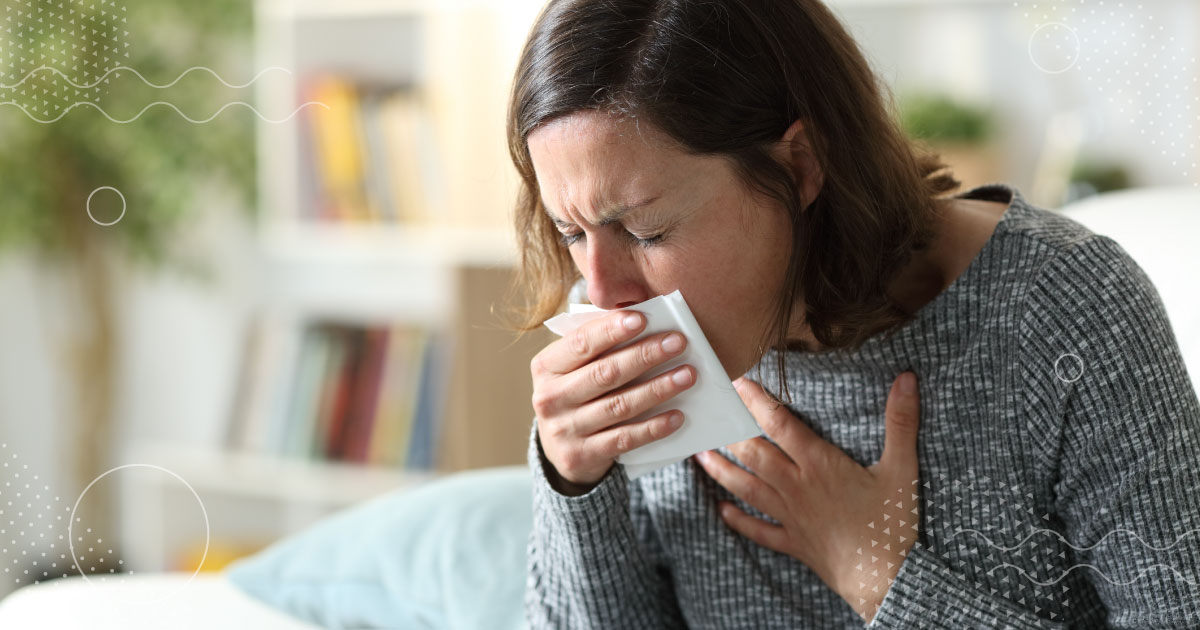How to Recognize Pneumonia Symptoms During Winter

With colder months approaching, understanding how to spot the early signs of pneumonia can make a real difference for families. This guide will help you recognize pneumonia symptoms, know who is most vulnerable, and understand when it’s time to visit the ER.
Recognizing Early Signs of Pneumonia in Cold Months
With colder months comes a rise in respiratory infections, and pneumonia becomes a bigger concern, especially for babies, older adults, and anyone with health issues. Spotting pneumonia early can prevent serious health problems and ensure your loved one gets the care they need right away.
What Is Pneumonia, and Why Is It More Common in Winter?
Pneumonia is an infection that inflames the air sacs in one or both lungs, leading to fluid or pus buildup. It can be caused by bacteria, viruses, or fungi. Winter tends to bring more respiratory infections like the flu, which can weaken the body’s defenses and make it easier for pneumonia to develop. During these colder months, we also spend more time indoors where germs spread faster.
Who’s Most at Risk?
While anyone can get pneumonia, some people are more at risk than others. These include:
- Young children – Kids under five, especially infants, have developing immune systems that can make it harder to fight infections.
- Older adults – People over 65 may have weaker immune systems or other health issues that put them at higher risk.
- People with health conditions – Those with asthma, lung diseases, diabetes, or weakened immune systems are more likely to get pneumonia.
Early Signs of Pneumonia to Watch For
Pneumonia symptoms can look a lot like a bad cold or the flu, so it’s important to notice any signs that stand out. Here are some symptoms to watch for:
- Persistent cough – A stubborn cough, frequently accompanied by thick or colored phlegm.
- High fever – A fever that doesn’t break or keeps going up may be a sign of infection.
- Trouble breathing – Feeling out of breath, especially if it happens suddenly, can be a warning.
- Chest pain – Pain in the chest when coughing or breathing deeply is a common symptom.
- Fatigue – Feeling very tired or weak, even after rest, can be a sign.
- Bluish lips or fingertips – This could mean low oxygen levels in the blood and is a serious symptom.
In children, you may also notice irritability, loss of appetite, or trouble feeding. For older adults, symptoms like confusion or sleepiness are also important to keep an eye on.
When It’s Time to Go to the ER
Pneumonia can get worse quickly, so knowing when to go to the ER is important. Seek emergency care if you notice:
- Trouble breathing – If breathing is hard, rapid, or labored, it’s time to seek help.
- High fever that doesn’t improve – A lasting high fever is more serious in young children and older adults.
- Chest pain – Any strong or ongoing chest pain, especially with breathing, needs to be checked.
- Confusion or drowsiness – This could indicate low oxygen levels and needs immediate attention.
If you or a loved one is in a high-risk group, even mild symptoms that get worse should be looked at by a doctor.
Tips for Managing Symptoms at Home
If symptoms are mild, here are a few steps to help manage them at home, though it’s always best to get medical advice when needed:
- Drink plenty of fluids – Staying hydrated helps thin out mucus, making it easier to manage.
- Get plenty of rest – Resting gives the body a better chance to fight off infection.
- Use a humidifier – Adding moisture to the air can help with a cough and make breathing easier.
- Monitor symptoms – Keep track of symptoms like fever and cough to catch any changes early.
Preventing Pneumonia During the Cold Months
Here are a few steps to help prevent pneumonia this season:
- Stay up to date on vaccines – The flu shot and pneumococcal vaccine can help protect against common infections that lead to pneumonia.
- Practice good hygiene – Wash your hands often and avoid touching your face to keep germs at bay.
- Avoid smoking – Smoking damages the lungs, making it easier to get infections.
- Eat healthy and stay active – A balanced diet and regular activity help keep your immune system strong.
Why Winter Brings Higher Risks
In winter, our immune systems can be weaker because of less sunlight, colder temperatures, and spending more time indoors. Cold air can also irritate the airways, making infections feel worse. With more people gathered indoors, germs spread quickly, so staying vigilant about hygiene is important.
We Are Here for You
Recognizing pneumonia symptoms early can protect your health and your loved ones. Don’t hesitate to seek care if symptoms get worse. Physicians Premier ER is here to help with expert, compassionate care when you need it. Stay informed, be prepared, and let’s keep our families healthy this season.
Sources:
“Pneumonia,” Mayo Clinic, https://www.mayoclinic.org/diseases-conditions/pneumonia/symptoms-causes/syc-20354204
“What Is Pneumonia?” American Lung Association, https://www.lung.org/lung-health-diseases/lung-disease-lookup/pneumonia/learn-about-pneumonia
“Pneumonia Symptoms and Diagnosis,” American Lung Association, https://www.lung.org/lung-health-diseases/lung-disease-lookup/pneumonia/symptoms-and-diagnosis
“Pneumonia – When Should you Seek Emergency Care?” Physicians Premier, https://mdpremier.com/pneumonia-when-should-you-seek-emergency-care/
“Pneumonia,” Nationwide Children’s Hospital, https://www.nationwidechildrens.org/conditions/pneumonia
“Why does the risk of pneumonia increase in winter?” The Health Site, https://www.thehealthsite.com/diseases-conditions/why-does-risk-of-pneumonia-increase-in-winter-b1117-534623/


